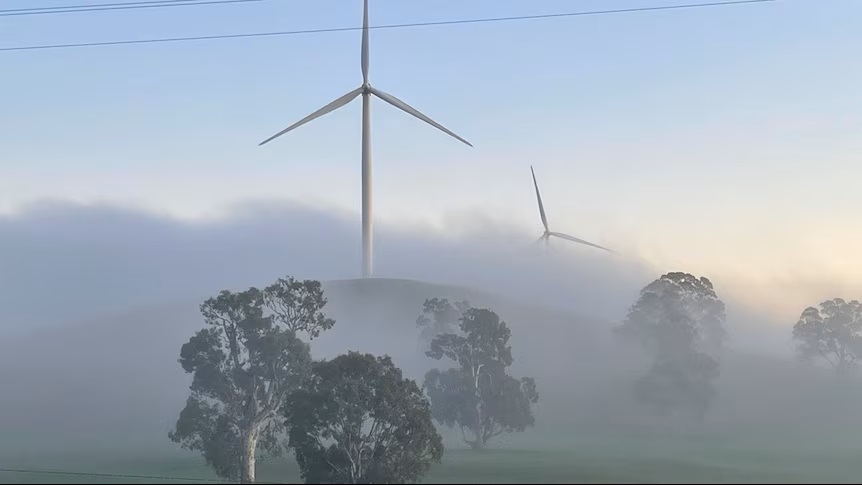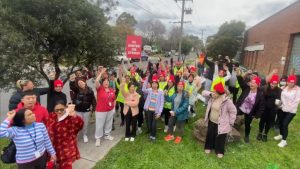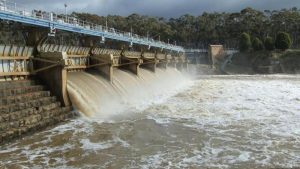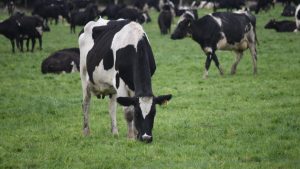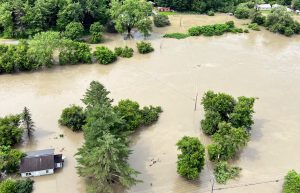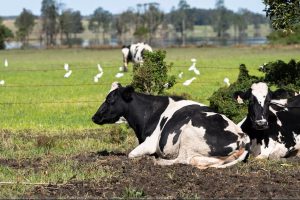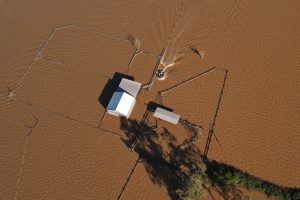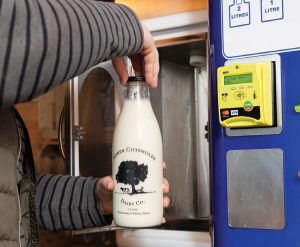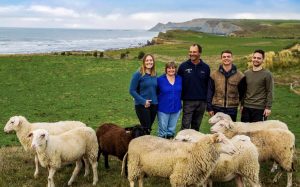
A profile image of a man with short, brown hair.
The Victorian government is pushing ahead with its renewable energy transition, releasing a 15-year plan to move away from coal.
Landowners in the path of renewable energy projects are concerned about losing their land and say they will lock their gates to builders and contractors.
The draft plan will be open to feedback until June 24, before a final plan is published on July 31.
The Victorian government is pushing ahead with its long-term plan to transition to renewable energy, while farmers in the path of proposed projects have vowed to lock out developers.
Government authority VicGrid released its draft 2025 Victorian Transmission Plan late last week, outlining a 15-year plan to move away from coal.
It outlined seven priority renewable energy generation zones, a shoreline zone in Gippsland and four new transmission lines to be built over the next 15 years, with 970 turbines and 5.2 million solar panels expected to be added in that time.
The seven priority areas mentioned in the Victorian Transmission Plan. (Supplied: VicGrid)
Ross Johns’s Wimmera farm sits within one of Victoria’s proposed renewable energy zones, north of Horsham in the state’s west.
Mr Johns, president of the Wimmera Mallee Environmental and Agricultural Protection Association, said many farmers were opposed to new renewables projects and transmission lines on farmland.
“The government has to build this through what I would say is enemy territory, and I think it’s going to be extraordinarily difficult,” he said.
“There will be a lot of people locking the gate and excluding construction across their properties.”
Ross Johns says the government is going to war with farmers over renewables. (Supplied: Jackie Peacock)
Mr Johns said farmers felt abandoned by the state government and were also at war with it over its emergency services and volunteers levy.
“This government has totally disregarded regional Victoria and totally disregarded farmers’ rights and the importance of agriculture to the Victorian economy,” he said.
‘Sick of everything changing’
In the state’s east at Giffard West, south of Sale, farmer Trent Anderson said sentiments were similar in his community.
“We know everyone needs the power but this VicGrid, government push is just garbage,” he said.
Trent Anderson says transmission plans have changed continuously in his region. (ABC Gippsland: Sarah Maunder)
Mr Anderson said an underground powerline was previously planned for his region, but that was being replaced with an overhead line under the new plan.
“We will deal in really good faith with all the companies working on underground [transmission lines],” he said.
“The whole point of this is that we’re sick of everything changing all the time.”
Impact limited
VicGrid chief executive Alistair Parker acknowledged the broad opposition to renewables infrastructure on farmland, but said the impact would be limited.
Alistair Parker says renewables projects will not require a significant amount of land. (Supplied: VicGrid)
“I know there’s been genuine fear about the impact on agricultural land and that we would be weakening Victoria’s food security, but the work we’ve done shows … it’s not going to take a huge amount of land,”
he said.
The planned renewable energy zones cover about 7 per cent of the state, but Mr Parker said only about 11 per cent of the land would be needed for development.
Renewables projects are permitted outside the zones, but VicGrid said they must not “have a negative impact on other projects inside the zone”.
Existing easements preferred
Mr Parker said the new transmission lines would be built on existing easements where possible.
He said VicGrid was “committed to working with people and listening to what they value most in the landscape”.
Ultimately, landowners cannot block transmission lines on their land.
But Mr Parker said they had the right to refuse wind and solar projects.
“People are obviously really distressed in some communities about this sort of industrial infrastructure,” he said.
“With wind, solar and batteries, it is entirely up to you whether or not you host this infrastructure.”
‘Engagement is key’
Renewable Energy Alliance national director Andrew Bray said listening to communities was key to establishing social licence around the transmission plan.
Andrew Bray says he is pleased with the way communities have been consulted on the plan. (Supplied: Andrew Bray)
“We’re actually quite pleased to see the government engaging in a way that really allows lots of feedback loops for the community to be involved,” said Mr Bray, whose independent not-for-profit was working with regional communities on the shift to renewables.
The Transmission Plan will be open to feedback until June 24, before a final plan is published on July 31.
Additional reporting by Warwick Long and Danielle Pope.
You can now read the most important #news on #eDairyNews #Whatsapp channels!!!
🇺🇸 eDairy News INGLÊS: https://whatsapp.com/channel/0029VaKsjzGDTkJyIN6hcP1K
